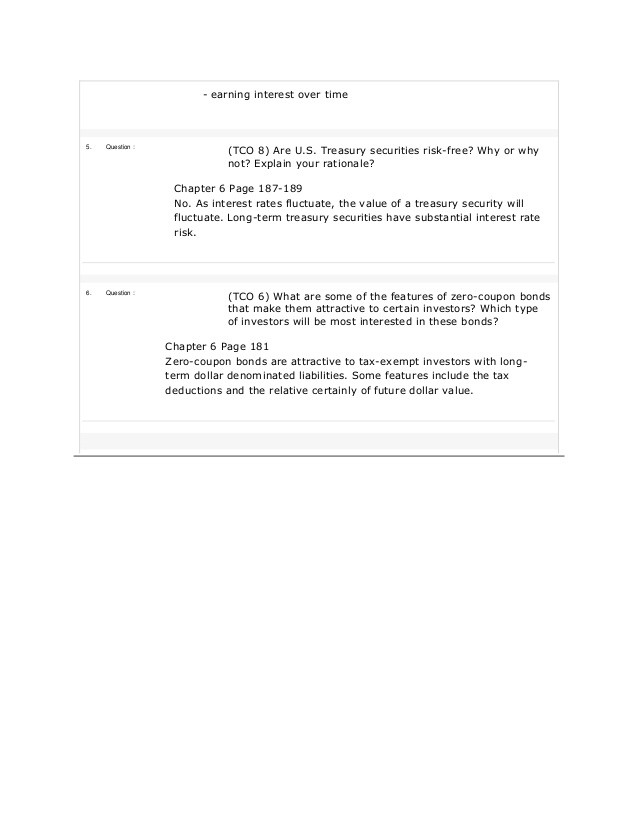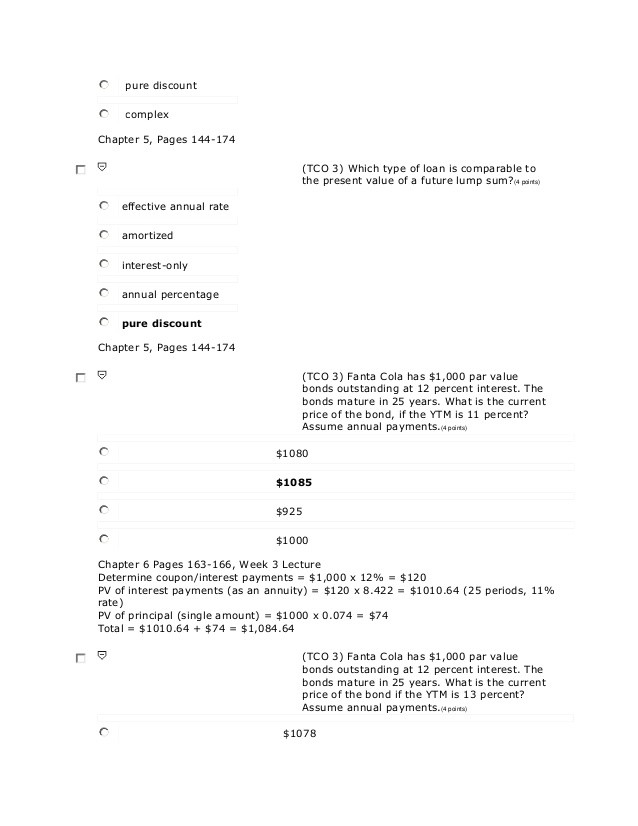Page Chapter 6 Bonds Bond Prices and the Determination of Interest Rates Part I
Post on: 20 Октябрь, 2015 No Comment

There is a lot going on in chapter 6. Understanding measurement is the first step towards analyzing the behavior of anything. This chapter is substantially quantitative so take the necessary time to review the formulas and the examples.
Bond Prices
Here we look at four basic types of bonds: Interest rates apply to four types of credit market instruments:
zero coupon bond or discount bond
- purchased at some price below its face value (or at a discount)
- entitles the owner to a face value payment at the maturity date.
- There are no interest payments, hence the name zero coupon bond.
- U.S. Treasury Bills are an example of a zero coupon bond.
fixed-payment loan
- provides the borrower with an amount of principal
- the principal and interest are repaid with equal monthly payments for a certain period
- each monthly payment is a combination of principal and interest
- mortgages and car loans are fixed-payments loans
coupon bond
- purchased at some price
- entitles the owner to fixed interest payments annually (coupon payments) until maturity and a face value payment (or par value) at maturity
- characterized by the issuer, the maturity, and the coupon rate, which is multiplied by the face value to determine the coupon payment
- Note: your textbook focuses on annual payments, but in fact, almost all coupon bonds issued in the United States have semi-annual payments.
consol

- purchased at some price
- entitles the owner to interest payments forever
- the principal is never repaid
The zero coupon bond consists of only one cash flow while fixed-payment, consols and coupon bonds have multiple cash flows life of the instrument. Both the amount and timing of cash flows are important when comparing financial instruments.
Zero-coupon Bonds
Because discount bonds have only one payment at maturity, it yield to maturity is easy to calculate and is similar to that of a simple loan. Most discount bonds have a maturity of LESS than one year, so the example below looks at such a case:
example 1: Consider a Treasury bill with 90 days to maturity, a price of $9875, and a face value of $10,000.
The current value is $9850, and the only future payment is $10,000 at maturity. However, we do not wait a year for this payment but only 90 days so we need to adjust the discounting for this.
The yield to maturity solves the following equation:
Solving for i,
This method is the convention in financial markets, known as the bond equivalent basis. If you use a financial calculator you may come up with a different answer. Here’s why .
In general, the yield to maturity is found by the formula
where F is the face value, P is the bond price, and d is the days to maturity.
Fixed-Payment Loan
This case is more complicated due to the multiple payments through the life of the loan. Your textbook example uses a loan with annual payments on page 71. However, the most common forms of this type of loan are for monthly payments, like a mortgage, student loans or an auto loan. Loans with multiple payments during the year are a bit more complicated, as shown in the example below:
example 2: Suppose you take out a $15,000 car loan for 5 years, with monthly payments of $300.
The value of the loan today is $15,000. The future payments are $300 payments over the next 60 months.
The yield to maturity is the i that solves the following equation:
Note that since payments are monthly for 5 years, there are a total of 5 x 12 = 60 payment periods. Also, the yield to maturity, i, is expressed on an annual basis, so i/12 represents the monthly discount rate (note 1)
So how do we solve this for i? Well it is not easy, since there is no way to isolate i in this equation. It could be done by trial and error (trying values of i until the right-hand side of the equation is $15,000), but that is too time consuming. This problem is solved with the aid of a table, financial calculator, or spreadsheet programs that do this automatically. A financial calculator is not required for this course, so I provide loan or bond table when needed.
Consider the following loan table:
We are looking for a 5 year loan (shaded yellow), and a monthly payment of $300. Looking at the table above we see that at 7.5% yield to maturity, the payment is $300.57. So the yield to maturity is slightly under 7.5% (7.42% to be more precise).
Click below for the high tech ways to solve this example:














